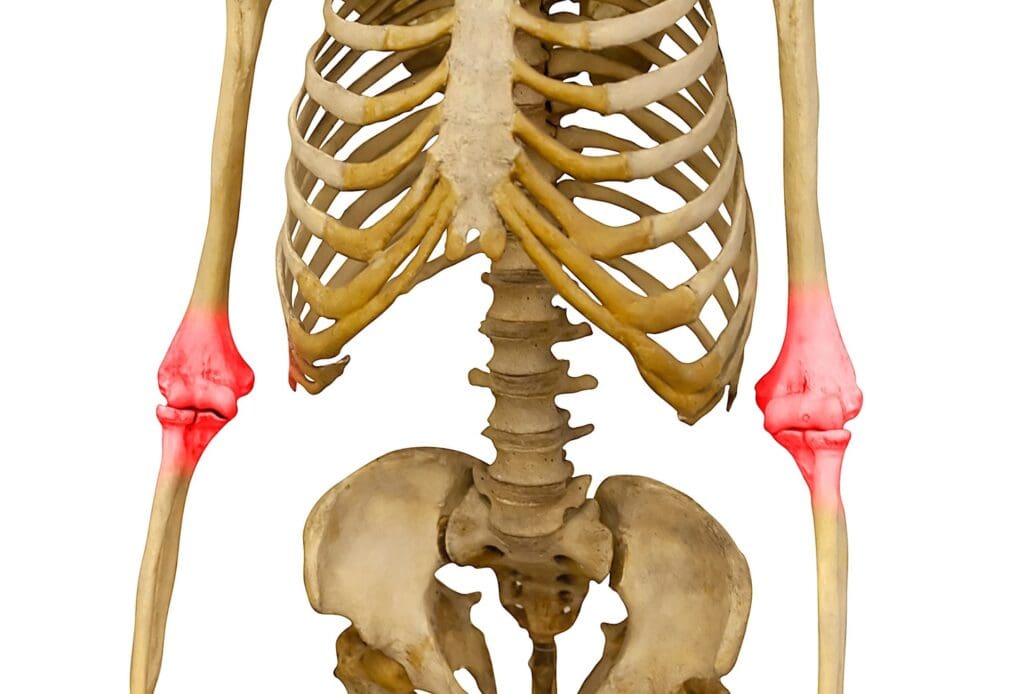Last Updated on November 27, 2025 by Bilal Hasdemir

When cancer reaches the bone, it marks a serious and complex stage. It affects patients and their families deeply. At Liv Hospital, our teams offer caring, innovative, and team-based care. We tackle the toughest questions about stage 4 bone cancer and the chance for cure or control.
Getting a stage 4 bone cancer diagnosis can be scary. At this point, cancer has spread to other parts of the body. This makes it hard to find a cure. But, there are treatments to help manage symptoms, slow the disease, and improve life quality.
Key Takeaways
- Stage 4 bone cancer is a complex condition where cancer has spread to distant parts of the body.
- Various treatment options are available to manage symptoms and slow disease progression.
- Multidisciplinary care is key in tackling stage 4 bone cancer’s challenges.
- Liv Hospital’s expert teams offer caring and innovative care for patients.
- Knowing the treatment options is vital for patients and their families.
What Are Bone Metastases?
Cancer cells from other parts of the body can move to the bone, causing bone metastases. This is a common issue with cancers like breast, prostate, and lung. It’s a serious problem.
Bone metastases happen when cancer cells from another part of the body reach the bone. This leads to secondary bone involvement. Knowing about bone metastases is key to finding the right treatment.
Definition and Osseous Metastases Explained
Bone metastases, or osseous metastases, mean cancer cells have spread to the bone. This is different from primary bone cancer, which starts in the bone. Osseous metastases show that cancer has advanced and need a detailed treatment plan.
The process of cancer cells reaching the bone involves complex interactions. This can cause bone destruction, pain, and other issues.
Difference Between Primary Bone Cancer and Metastatic Bone Cancer
Primary bone cancer is rare and starts in the bone tissue. Metastatic bone cancer, or bone metastases, happens when cancer cells from other parts spread to the bone. Knowing the difference is important for choosing the best treatment.
Here’s a table to show the differences:
| Characteristics | Primary Bone Cancer | Metastatic Bone Cancer |
|---|---|---|
| Origin | Originates in the bone tissue | Spreads to the bone from other parts of the body |
| Cancer Type | Rare, specific types like osteosarcoma | Commonly from breast, prostate, lung cancer |
| Treatment Approach | Typically involves surgery, chemotherapy | Often involves systemic treatments, radiation therapy |
It’s important to know the difference between primary bone cancer and metastatic bone cancer. This helps in creating an effective treatment plan. We will look deeper into bone metastases and their treatment in the next sections.
How Cancer Spreads to Bones
Cancer spreading to bones is a complex process. It can greatly affect how well a patient does. When cancer reaches bones, it starts a chain of events that can make life harder and limit treatment choices.
The Metastatic Process
The journey of cancer to bones is complex. It starts with cancer cells breaking off from the main tumor. These cells then travel through blood or lymph, reaching bones where they form new tumors. “The metastatic process is a highly selective process, and not all cancer cells that enter the circulation will successfully colonize distant organs,” as highlighted in various medical research.
Understanding the steps of metastasis is key to finding better treatments.
Common Sites of Bone Metastases
Bone metastases often happen in the spine, pelvis, ribs, and long bones. These areas have lots of red marrow, perfect for cancer cells to grow. The spine is extra vulnerable because of its blood flow and Batson’s plexus, a vein network that helps cancer spread.
Does Bone Cancer Spread Quickly?
How fast bone cancer spreads varies. It depends on the cancer type and the patient’s health. For example, prostate cancer in bones might grow slower than lung cancer. A patient with bone metastatic prostate cancer said, “Knowing how my disease progresses helps me deal with the future”
Many things affect how fast cancer spreads. These include the cancer’s aggressiveness, treatment success, and the patient’s health.
Primary Cancers That Commonly Metastasize to Bone
Bone metastases are often linked to specific cancers. Knowing where these metastases come from is key to better treatment. We’ll look at the cancers that most often spread to bone, and what this means for patients.
Breast Cancer
Breast cancer is a top cancer to spread to bone. The skeletal system is often affected, leading to issues like bone pain, fractures, and high calcium levels. It’s important to give oct patients the care they need to handle these problems.
Prostate Cancer
Prostate cancer also often spreads to bone, mainly to the spine, pelvis, and ribs. The metastatic process in prostate cancer often involves the axial skeleton, causing a lot of discomfort. We stress the need to watch and manage bone metastases in prostate cancer patients.
Lung Cancer
Lung cancer, mainly non-small cell lung cancer, tends to spread to bone. Bone metastases from lung cancer can be aggressive, leading to severe pain and fractures. We emphasize the importance of quick diagnosis and treatment to improve quality of life.
Other Primary Cancers
While breast, prostate, and lung cancers are the most common, other cancers like kidney and thyroid can also spread to bone. The characteristics of these metastases can vary, requiring a personalized approach to management. We take into account the variety of cancers when planning treatment.
| Primary Cancer | Common Sites of Bone Metastases | Characteristics |
|---|---|---|
| Breast Cancer | Spine, Ribs, Pelvis | Osteolytic or mixed lesions, often causing bone pain and fractures |
| Prostate Cancer | Spine, Pelvis, Ribs | Osteoblastic lesions, potentially leading to spinal cord compression |
| Lung Cancer | Spine, Ribs, Femur | Often osteolytic, can be aggressive and cause severe pain |
Knowing which cancers spread to bone is vital for effective care. We’ve seen that breast, prostate, and lung cancers are the most common culprits, each with its own challenges. By understanding these patterns, we can improve how we manage bone metastases and help patients better.
Recognizing Stage 4 Bone Cancer Symptoms
It’s vital to spot stage 4 bone cancer symptoms early. This type of cancer spreads to the bones from another part of the body. We’ll look at the common signs of this condition.
Bone Pain and Fractures
Bone pain is a common symptom of stage 4 bone cancer. This pain can last a long time and get worse. The cancer can make bones weak, raising the chance of fractures.
Fractures, or breaks, can happen even with little effort. This is because the bones are weakened.
Some key aspects of bone pain and fractures include:
- Persistent pain in the affected bone
- Pain that worsens with activity or at night
- Increased risk of fractures due to weakened bones
- Fractures that occur with little or no trauma
Neurological Symptoms
When stage 4 bone cancer hits the spine, it can cause neurological problems. These issues come from the spinal cord being compressed. Symptoms include:
- Numbness or tingling sensations in the limbs
- Weakness in the arms or legs
- Difficulty walking or maintaining balance
- Loss of bladder or bowel control in severe cases
Seeing a doctor quickly is key if you notice these symptoms. Early treatment can prevent serious damage.
Systemic Symptoms
Stage 4 bone cancer can also cause symptoms that affect the whole body. These include:
- Weight loss and loss of appetite
- Fatigue or feeling weak
- Hypercalcemia (high levels of calcium in the blood), which can cause confusion, constipation, and other symptoms
Dealing with these symptoms can be tough. Our healthcare team is here to offer full care and support. We aim to manage these symptoms well.
Diagnosing Bone Metastases
We use many techniques to find bone metastases. It’s key to know the cancer stage and plan treatment. We use imaging tests and lab work together for this.
Imaging Tests
Imaging tests are very important for finding bone metastases. They show where and how much bone is affected. We use:
- X-rays: Good for spotting bone lesions and breaks.
- CT scans: Show detailed bone and tissue images.
- MRI: Gives clear images of soft tissues and bones.
- Bone scans: Spot areas where bone activity is up.
We pick the best test for each patient based on their situation and where the metastases might be.
Biopsy and Laboratory Tests
Biopsy and lab tests are also key for diagnosing bone metastases. A biopsy takes a bone sample for study. Lab tests check for tumor and bone markers in the blood.
Here’s a table of the main tests for bone metastases:
| Diagnostic Test | Purpose | Information Provided |
|---|---|---|
| X-rays | Detect bone lesions and fractures | Location and extent of bone damage |
| CT scans | Detailed imaging of bones and tissues | Extent of bone involvement and soft tissue impact |
| MRI | High-resolution imaging of soft tissues and bones | Detailed view of tumor extent and soft tissue involvement |
| Bone scans | Identify areas of increased bone activity | Extent of bone metastases |
| Biopsy | Examine bone tissue sample | Confirmation of cancer presence and type |
| Laboratory tests (blood tests) | Assess tumor markers and bone turnover markers | Indicators of disease activity and progression |
By using these tests together, we can accurately find bone metastases. Then, we can plan the best treatment.
Can Bone Metastases Be Cured? The Reality of Treatment Goals
Can bone metastases be cured, or is it better to control the disease and ease symptoms? The truth is, a cure for bone metastases is hard to find. But, treatment aims to control the disease, ease symptoms, and improve life quality.
It’s important to know the difference between “cure” and “control” in bone metastases. A “cure” means getting rid of the disease completely, which is tough with metastatic cancer. “Control” means managing the disease to stop it from getting worse, ease symptoms, and keep the patient’s function.
The Concept of “Cure” vs. “Control”
Bone metastases are often seen as a long-term condition that needs ongoing care. Treatment plans focus on controlling the disease to improve or keep the patient’s quality of life. A team of healthcare experts works together to create a treatment plan that fits the patient.
The difference between “cure” and “control” affects what patients hope for and what treatments they choose. Some patients might stay in remission for a long time, while others need ongoing care to manage their condition.
Factors Affecting Prognosis and Survival
Many things can change how well a patient with bone metastases does. These include the type of cancer, how far the disease has spread, and the patient’s health. For example, patients with breast or prostate cancer usually do better than those with lung cancer.
- The primary cancer type and its biological characteristics
- The extent of bone involvement and presence of other metastatic sites
- The patient’s overall health, including comorbidities and performance status
- Response to previous treatments and the presence of specific genetic mutations
Knowing these factors helps doctors create effective treatment plans. It also helps them give patients realistic hopes about their future.
In short, while a cure for bone metastases is not always possible, controlling the disease and improving life quality are within reach. By understanding what affects prognosis and survival, doctors can tailor treatments to meet each patient’s needs.
Comprehensive Treatment Approaches for Stage 4 Bone Cancer
Stage 4 bone cancer treatment needs a custom plan. It’s not a one-size-fits-all solution. Patients have unique needs that require a detailed approach.
Systemic Treatments
Chemotherapy and hormone therapy are key in treating stage 4 bone cancer. They target cancer cells all over the body. This helps control the disease’s spread.
Chemotherapy is used for cancers that have spread to the bones. Hormone therapy is for cancers that are sensitive to hormones. This includes some breast cancer and prostate cancer.
Radiation Therapy and Radiopharmaceuticals
Radiation therapy uses high-energy rays to kill cancer cells. It’s great for easing bone pain and preventing fractures.
Radiopharmaceuticals target specific bone metastases. They help reduce pain and improve life quality for patients with many bone metastases.
Surgical Interventions and Stabilization Procedures
Surgery is needed to stabilize bones weakened by cancer. Orthopedic surgery can restore function and reduce pain in limbs.
Procedures like kyphoplasty and vertebroplasty stabilize vertebrae compressed by tumors. They relieve pain and improve spinal stability.
Specialized Treatments for Specific Bone Metastases Locations
The location of bone metastases greatly affects treatment plans. Understanding this is key when dealing with stage 4 bone cancer. Each part of the body needs a unique approach to manage the disease well.
Stage 4 Bone Cancer in the Skull
Metastases in the skull are challenging because of their closeness to the brain. We use stereotactic radiosurgery to target tumors precisely. This method helps avoid harming healthy tissue. Sometimes, surgery is needed to relieve brain pressure or fix skull damage.
Spinal Metastases Management
Spinal metastases need a team effort to avoid nerve damage and keep the spine stable. We mix radiation therapy with surgery to tackle both the tumor and any spine issues. This approach helps keep nerves working and improves life quality.
Long Bone and Pelvic Metastases Approaches
Metastases in long bones and the pelvis can hurt mobility and life quality. We use surgery, like intramedullary nailing or joint replacement, to prevent breaks and ease pain. Radiation therapy helps control tumor growth and fracture risk. Bone-strengthening agents may also be used to prevent skeletal problems.
By customizing treatments for each bone metastases location, we can better outcomes. This approach improves life quality for stage 4 bone cancer patients.
Innovative and Emerging Therapies for Bone Metastases
Bone metastases treatment is changing fast with targeted therapies and immunotherapy advances. We’re learning more about cancer spreading, leading to new treatments. These aim to better patient outcomes and quality of life.
Targeted Therapies
Targeted therapies are a big hope in research. They focus on cancer’s weak spots. This way, they can harm cancer cells less, reducing side effects and improving results.
For example, treatments targeting the RANK/RANKL pathway might help with bone metastases. They work by stopping bone breakdown.
Bisphosphonates and denosumab are also being used. They help prevent bone problems in cancer patients. These treatments are key for keeping bones healthy in cancer patients.
Immunotherapy Advances
Immunotherapy is changing cancer treatment, including for bone metastases. It boosts the immune system to fight cancer better. Checkpoint inhibitors, a type of immunotherapy, are showing great promise by helping the immune system work better.
New approaches like adoptive T-cell therapy and cancer vaccines are being tested. They might help treat bone metastases. These are in clinical trials, giving hope for better treatments.
Clinical Trials and Research Directions
Clinical trials are key for testing new treatments for bone metastases. They look at many therapies, from new drugs to combinations of treatments. Patients in trials get access to new treatments that might not be available yet.
Research is also deepening our understanding of bone metastases. It’s finding new targets for therapy and better treatment plans. As we learn more, we can develop more tailored and effective treatments for bone metastases patients.
Conclusion: Living with Bone Metastases
Living with bone metastases can be tough, even with stage 4 bone cancer. But, with the right care and new treatments, patients can live better lives.
It’s key to have a team of doctors working together. This way, patients and their families can understand the disease better. They can also find the best treatment options.
Even with stage 4 bone cancer, there’s hope. New treatments and care plans have helped many patients. We aim to give top-notch healthcare to international patients. We want to help them manage bone metastases effectively.
FAQ
What are bone metastases?
Bone metastases happen when cancer cells from other parts of the body spread to the bones. This is common in cancers like breast, prostate, and lung cancer.
Can bone metastases be cured?
Curing bone metastases is not always possible. Instead, treatments aim to control the disease and improve life quality. This means managing symptoms and slowing disease growth.
What is the difference between primary bone cancer and metastatic bone cancer?
Primary bone cancer starts in the bone itself. Metastatic bone cancer, on the other hand, comes from cancer cells spreading to the bone from elsewhere in the body.
How does cancer spread to bones?
Cancer cells break away from the main tumor. They then travel through the blood or lymphatic system to reach bones. There, they settle and grow.
What are the common sites for bone metastases?
Bone metastases often occur in the spine, pelvis, ribs, and long bones.
Does bone cancer spread quickly?
How fast bone cancer spreads varies. It depends on the type of cancer and the individual’s health.
What are the symptoms of stage 4 bone cancer?
Symptoms include bone pain and fractures. If the cancer is in the spine, it can cause neurological issues. Systemic symptoms like weight loss and fatigue also occur.
How are bone metastases diagnosed?
Doctors use imaging tests like X-rays and CT scans. They also do MRIs and bone scans. Blood tests and biopsies help confirm the diagnosis.
What are the treatment options for stage 4 bone cancer?
Treatments include chemotherapy and hormone therapy. Radiation therapy and radiopharmaceuticals are also used. Surgery may be needed to stabilize bones and manage symptoms.
Are there any innovative therapies for bone metastases?
Yes, new treatments like targeted therapies and immunotherapy are being explored. Clinical trials offer hope for better outcomes.
How is stage 4 bone cancer in the skull treated?
Specialized radiation techniques are used to treat skull metastases. This helps protect the brain.
What is the management approach for spinal metastases?
Spinal metastases are treated with radiation therapy and surgery. This helps prevent neurological problems.
Can long bone and pelvic metastases be treated?
Yes, treatments include surgery and radiation therapy. These help prevent fractures and reduce pain.
- American Cancer Society. (n.d.). Bone Metastasis. Retrieved from https://www.cancer.org/cancer/managing-cancer/advanced-cancer/bone-metastases.html
- Cancer Research UK. (n.d.). About secondary bone cancer. Retrieved from https://www.cancerresearchuk.org/about-cancer/secondary-cancer/secondary-bone-cancer/about
- National Center for Biotechnology Information (NCBI). (n.d.). Bone Metastasis (StatPearls Publishing). NBK507911. Retrieved from https://www.ncbi.nlm.nih.gov/books/NBK507911/








